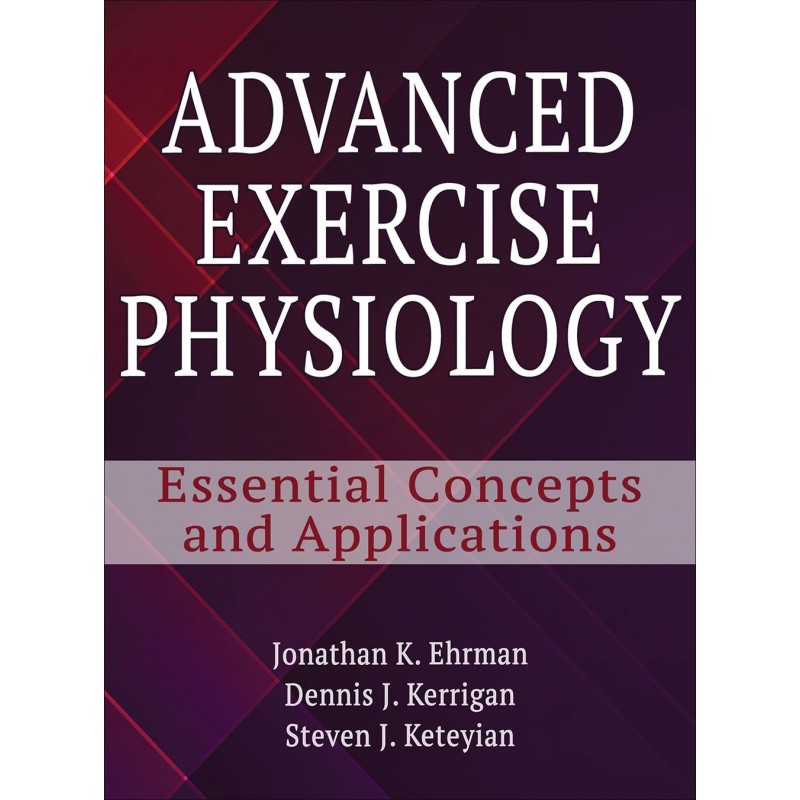- Reduced price

Order to parcel locker

easy pay


 Delivery policy
Delivery policy
Choose Paczkomat Inpost, Orlen Paczka, DHL, DPD or Poczta Polska. Click for more details
 Security policy
Security policy
Pay with a quick bank transfer, payment card or cash on delivery. Click for more details
 Return policy
Return policy
If you are a consumer, you can return the goods within 14 days. Click for more details
Advanced Exercise Physiology:: Essential Concepts and Applications builds upon foundational topics and looks further into key physiological components to help advanced students gain a deeper level of understanding. Authors Jonathan K. Ehrman, Dennis J. Kerrigan, and Steven J. Keteyian address a wide range of complex topics with evidence-based information and a focused, targeted style.
The first five chapters offer a detailed examination of the various body systems. The next two chapters focus on exercise testing and training principles, as well as training adaptations as they relate to aerobic power, anaerobic power, range of motion, and resistance training of healthy individuals and competitive athletes. The remaining chapters focus on a variety of topics, including athletic performance, body composition and weight management, and environmental influences of exercise physiology. The final two chapters bring a unique perspective to the book with a review of the relationship between exercise physiology and public health and a look at recent and emerging topics in the field, including genomics and pharmacology.
Enhancing the content are learning aids, more than 140 images and illustrations, and practical examples from among clinical patients, healthy individuals, and competitive athletes. Key terms and their definitions appear at the end of each chapter; these help students understand key concepts and serve as a useful reference for practitioners. The appendixes contain information related to topics such as efficiency and energy expenditure, metabolic equivalent (MET) values of common activities, and the professionalization of exercise physiology.
For instructors, Advanced Exercise Physiology also includes a test package and an image bank to assist wtih classroom lecture preparations. The ancillaries, in-text learning components, and comprehensive content combine to create an ideal text to be used in advanced courses in exercise physiology.
Data sheet
Chapter 1. Exercise Metabolism
Chapter 2. Dynamics of Skeletal-Neuromuscular and Gastrointestinal Physiology
Chapter 3. Cardiovascular System: Function and Control
Chapter 4. Pulmonary Exercise Physiology
Chapter 5. Immune and Endocrine System
Chapter 6. Principles for Testing and Training for Aerobic Power
Chapter 7. Principles for Testing and Training Anaerobic Strength, Power, and Range of Motion
Chapter 8. Body Composition and Weight Management
Chapter 9. Performance: Environmental Stressors, Genetics, Nutrition, and Ergogenic Aids
Chapter 10. Physical Activity and Exercise for Health and Fitness
Chapter 11. Emerging Concepts: Exercise Pharmacology and Exercise Genomics
Appendix A. Calculations for Oxygen Consumption and Carbon Dioxide Production
Appendix B. Efficiency and Energy Expenditure
Appendix C. Metabolic Equivalent of Task Values of Common Activities
Appendix D. Professionalization of the Exercise Professional
Appendix E. Common Scientific Abbreviations and Units
Reference: 77559
Author: Susan Starkings
Reference: 35875
Author: Kenneth L. Bontrager
Volume 1
Reference: 43180
Author: Kenneth L. Bontrager
Reference: 47964
Author: Timothy S. Loth
A Specialty Board Review Series
Reference: 38501
Author: Sharon M. Weinstein
